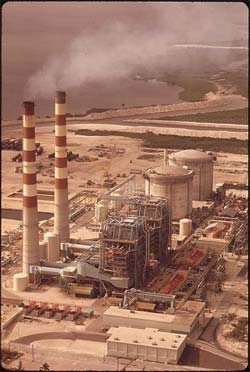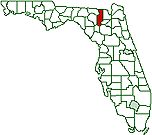Environmental Groups Sue FPL Over Pollution at Turkey Point Nuke
Posted July 14, 2016 06:55 am | Public News Service
 MIAMI, FL –
Environmental advocates are wading into legal waters in
an effort to protect Biscayne Bay from what they say is
ongoing pollution from a Florida utility.
MIAMI, FL –
Environmental advocates are wading into legal waters in
an effort to protect Biscayne Bay from what they say is
ongoing pollution from a Florida utility.
The Turkey Point power plant outside Miami pumps
millions of gallons of fresh water into canals each day
to cool its two nuclear reactors, and researchers say
the discharge is posing a threat to the entire
ecosystem, as well as the more than 3 million Floridians
who get their drinking water from the Biscayne Aquifer.
Stephen Smith, executive director of the Southern
Alliance for Clean Energy, says years of promises from
Florida Power and Light to get the situation under
control simply aren't enough.
"We think that it does not solve the problem going
forward, and we have real concerns about its ability to
effectively remediate the problem that has been
generated over the past 40 years," he states.
Smith's group, along with the Tropical Audubon Society and Friends of the Everglades, filed a federal lawsuit against the utility, alleging violations of the Clean Water Act.
For years, environmentalists, residents and National
Park Service officials have raised concerns about the
hot and increasingly salty canals and a saltwater plume
that extends for miles from the facility.
Florida Power and Light has said in the past it was
working to clean up the Turkey Point facility and
earlier this year issued a statement announcing
"progress on several fronts" in the utility's effort to
improve the water quality in and around the cooling
system.
But Smith maintains the entire premise of using canals
is flawed.
"This elaborate, 10 square mile, open industrial sewer
is the best way to describe it,” he stresses. “It is
unique. It is a grand experiment that has systematically
failed."
Smith adds that many nuclear power plants use cooling
towers where the heat of the water transfers to the
ambient air by evaporation. The utility is currently
seeking permission to build two additional nuclear
reactors at the site.
A final environmental impact statement on the proposal
is slated for released in October.
Photo: Fred Ward/U.S. National Archives
This piece was reprinted by the Columbia County Observer with permission or license. It may not be reproduced in any form without permission or license from the source.

